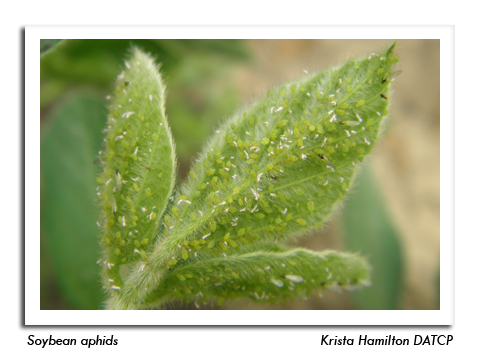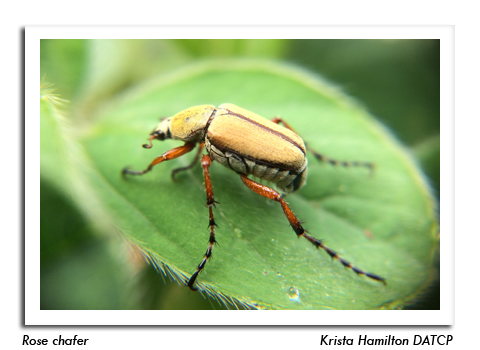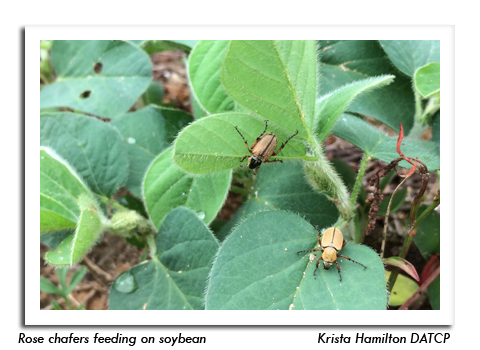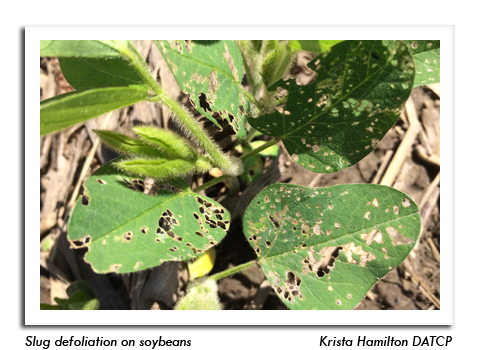
 |
|
|
Soybeans
Volume 52 Number 8 Date 06/15/2017 SOYBEAN APHID - Densities are low and aphids have colonized no more than 10% of plants at most sites, although one exceptional field in Trempealeau County surveyed on June 12 had a 35% infestation rate, with an average of 19 aphids per infested plant. Several plants in this field were infested with about 50-80 aphids concentrated on the newest trifoliate. Average counts in the other 30 soybean fields sampled this week were less than two aphids per plant and nine per infested plant, based upon examination of 100 plants per field. Populations are expected to increase sharply as soybean fields enter the reproductive stages of growth. Routine monitoring for aphids should begin by early July. ROSE CHAFER - Light defoliation caused by this beetle was observed this week in a few western Wisconsin soybean fields. Currently the infestations involve fewer than 2% of plants, though as many as four beetles per plant were found in two fields, one in La Crosse County and another in Trempealeau County. Rose chafers are also appearing on corn and a variety of ornamental and garden plants. Beetle pressure is likely to be heaviest in fields on sandy soils and can be expected to continue until mid-July. SLUGS - Surveys in the west-central counties found minor but widespread leaf feeding injury on approximately 2-30% of plants in fields with soils saturated after several rounds of heavy rain. The observed defoliation was primarily limited to the unifoliate leaves and was not expected to have an adverse long-term impact on the plants. Economic thresholds have not been developed for slug control in soybeans or corn and chemical control using baits should only be considered as a last resort when plants show severe defoliation, wet conditions persist, and the slugs are actively feeding. -- Krista Hamilton, DATCP Entomologist 



|
|
|